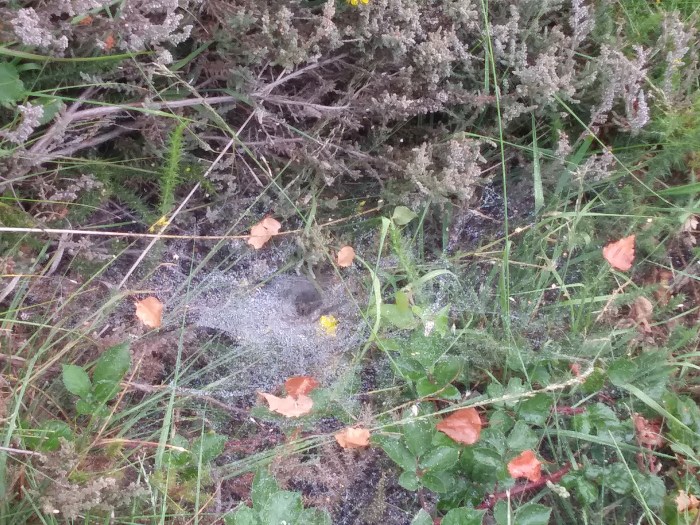SPIDERS are the stuff of our nightmares, it seems.
From the giant spiders Bilbo Baggins and his dwarf companions encounter in Mirkwood on their quest in The Hobbit to the enormous, sentient Aragog in Harry Potter, fiction writers have been only too eager to play on our fears.

But why are we SO scared of spiders when the vast majority are harmless to humans and most are actively beneficial, gobbling up household pests?
Their silken webs are things of beauty on a dewy morning, as Roy Battell captures in startling images from his Moorhens website (below). And yet fear of spiders is just about the most common phobia in the world.

If that’s the case, you’d expect it to be because we have suffered some sort of trauma involving spiders.
But although spiders could bite if they feel threatened or endangered and most are venomous, in the UK we have little to actively worry about, even if there are literally hundreds of different species living here…and more than 35,000 known species worldwide.

But unlike the Americans, we don’t have to worry about the black widow or brown recluse, never mind the Sydney funnel-web spider, the most dangerous spider to humans in the world, which is native to Australia.
In fact very few of us have undergone any real spider trauma – so why is arachnophobia so prevalent, with children identifying fear of spiders as their biggest terror?
Back in 2015, spider expert Chris Buddle explained in The Independent some of the potential causes, although maybe it’s their sheer ‘legginess’ which gives us the shudders, coupled with cultural beliefs about the nature of spiders.

But if it was an evolutionary fear of animals which posed a threat to ancient humans, why do we not worry more about tigers or crocodiles?
Autumn is a good time to appreciate spiders, when they reach full maturity, and early morning walkers find their webs fascinating, gloriously backlit by the early morning sun.

Numerous online articles provide pictures of the most common types, with UK Safari highlighting 65 species, starting with the 16 about which they receive most queries.
You can also take your pick from guides published in Countryfile, local wildlife trust, the Natural History Museum or even The Sun to get a better idea of the exact species you are looking at.

For those intrigued by the delicate webs, there’s much more to discover, though. All spiders have two claws on their feet, but web-spinning spiders have three. They are used not only to pull the silk but also to grip and release the web’s threads and provide traction as they move around it.
Spiders spin two kinds of silk: sticky strands used to capture prey which make up the spiralling threads of the web and non-sticky or “dragline” silk used to provide structural support, and which spiders walk on to avoid getting caught in their own webs.

Female spiders build the webs and there are three main types: orb webs, funnel or sheet webs, and the irregular webs of common house spiders.
But not all spiders make webs: flower crab spiders alter their colour like chameleons to ambush their prey, the wolf spider leaps out on its prey like its namesake, the wasp spider disguises itself as a wasp to keep it safe from predators, the raft spider can walk on water, and the water spider even lives under water, building a bell-shaped tent between plant stems.

The nursery web spider rather cutely does not spin a web to catch food, but builds a silk sheet in the vegetation to act as a tent for her young, sheltering them until they are old enough to leave on their own.
On heathlands the gorse bushes can often be seen enveloped in huge gossamer webs. These webs are made by tiny animals known as gorse spider mites – bright red mites which live in large colonies and are used in countries like New Zealand to control the spread of gorse, which is regarded there as an invasive weed.


One thought on “Why are we so scared of spiders?”